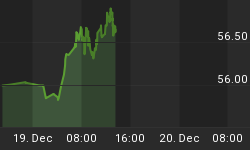Savers are the obvious victims of the past few years' plunge in interest rates. But there are other casualties, including money market funds, which have no reason for existing if their yield is negative, and insurance companies, which price their policies on the assumption that they'll earn good returns on their bond portfolios.
As bond yields plunge, the returns insurance companies can expect are also plunging, forcing them into huge write-offs and, soon, steep premium increases that will scare away customers. One big insurer just illustrated the spot in which the industry finds itself:
Lloyd's of London Takes `Massive Hit' From Low Investment Return
(Bloomberg) - Lloyd's of London reported a 30 percent drop of full-year profit as the world's largest insurance market was hurt by continued pressure on pricing and the lowest investment returns since at least 2001.
Earnings declined to 2.1 billion pounds ($3 billion) for 2015 as income from investments, primarily fixed income, sank 60 percent to 400 million pounds, according to the company's annual report Wednesday. Weaker pricing in 2015 is expected to continue this year, it said.
"We've taken a double hit from reduced margins in underwriting and lower investment yield," Chief Executive Officer Inga Beale said in an interview with Bloomberg Television Wednesday. "On the investment side we saw a dramatic reduction in 2015 that was a massive hit" to earnings.
Most of Lloyd's 2015 earnings were generated when bond yields were a lot higher than they are today, so things will be much worse going forward. Here, for instance, is that now-famous chart of Japanese long-bond yields plunging from modestly positive to negative in the space of a few months.

For an insurance company -- or a pension fund (more about them in another post) -- the only recourse is to adjust to this new reality by raising premiums and taking huge writedowns, as Lloyds just did. In such a harsh environment, weak players will fail and strong ones will suffer, but few will make the kind of money that justifies the effort.
And now on to the banks. If your business model is to borrow short-term at low rates and lend longer-term at higher rates, a flattening yield curve -- which eliminates the difference between long and short rates -- is an existential threat. But in recent years the big Wall Street banks have morphed from traditional lenders into hedge funds which make most of their money by trading increasingly-exotic financial instruments for their own accounts. And in a world of flattening yield curves and multi-industry credit crises, this kind of trading is suddenly a loser's game.
Liquidity Death Spiral Traps Credit Suisse
(Bloomberg) - Credit Suisse just got caught up in the same liquidity death spiral that has claimed a growing number of debt funds.
Some of the bank's traders increased holdings of distressed and other infrequently traded assets in recent months without telling some senior leaders, Credit Suisse CEO Tidjane Thiam said on Wednesday in a Bloomberg Television interview. This is bad on several levels. For one, it highlights some pretty poor risk management on the part of senior officers at the Swiss bank.
But perhaps more important from a market standpoint, it exposes a trap in the current credit market: Traders are getting increasingly punished for trying to sell unpopular debt at the wrong time. The result has been a growing number of hedge-fund failures, increasing risk aversion by Wall Street traders and further cutbacks at big banks.
This all simply reinforces the lack of trading in less-common bonds and loans. At best, this spiral is inconvenient, especially for mutual funds and exchange-traded funds that rely on being able to sell assets to meet daily redemptions. At worst, it could set the stage for another credit seizure given the right catalyst -- perhaps a sudden, unexpected corporate default or two, or the implosion of a relatively big mutual fund.
To give a feeling for just how inactive parts of the market have become, consider this: About 40 percent of the bonds in the $1.4 trillion U.S. junk-debt market didn't trade at all in the first two months of this year, according to data compiled from Finra's Trace and Bloomberg. While corporate-debt trading has generally increased by volume this year, more of the activity is concentrated in a fewer number of bonds.
This has made it even harder for big banks to justify buying riskier bonds to make markets for their clients, the way they used to, because they could get stuck holding the bag. That's what happened with Credit Suisse, apparently. The bank suffered $258 million of writedowns this year through March 11, and $495 million of losses in the fourth quarter, because of its holdings of distressed debt, leveraged loans and securitized products, including collateralized loan obligations, according to a Bloomberg News article by Donal Griffin and Richard Partington.
Credit Suisse is in a tough spot because it is trying to get out of its hard-to-trade assets at a bad time. It's re-evaluating its business model under new leadership, higher capital requirements and the shadow of poor earnings.
But it's certainly not alone in feeling the pain from a brutal and unforgiving period in debt markets. JPMorgan Chase, Bank of America and Goldman Sachs are expected to report disappointing trading revenues in the first three months of the year, and Jefferies already reported its train wreck of a quarter.
The upshot of all this paper carnage is that zero and negative interest rates are equal-opportunity destroyers, crushing the conservative strategies of insurance companies along with the idiotically aggressive practices of modern mega-banks. Virtually no area of finance will continue to function normally if rates stay at this level or -- can't wait to see this -- go more deeply negative. And many niches will shrivel up and die.
We may, in short, be about to witness the market's self-correcting mechanism in action.















